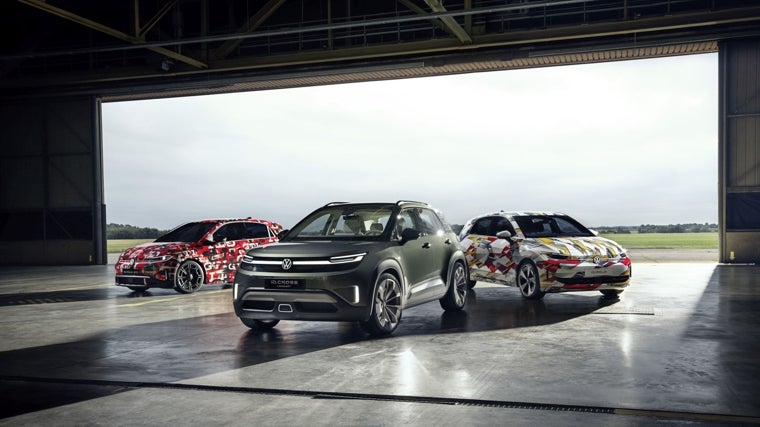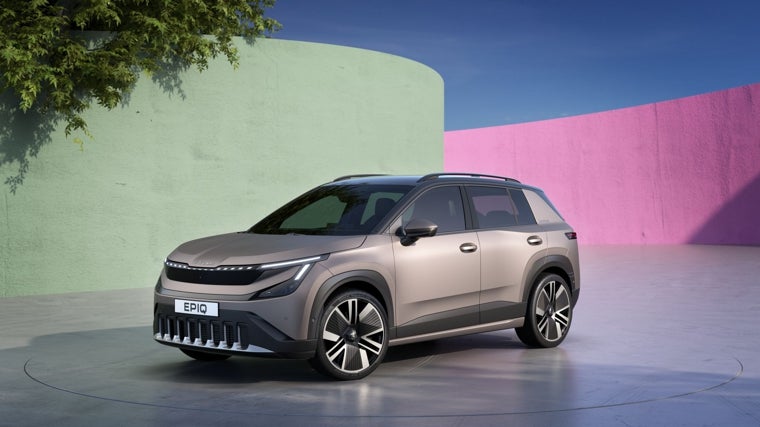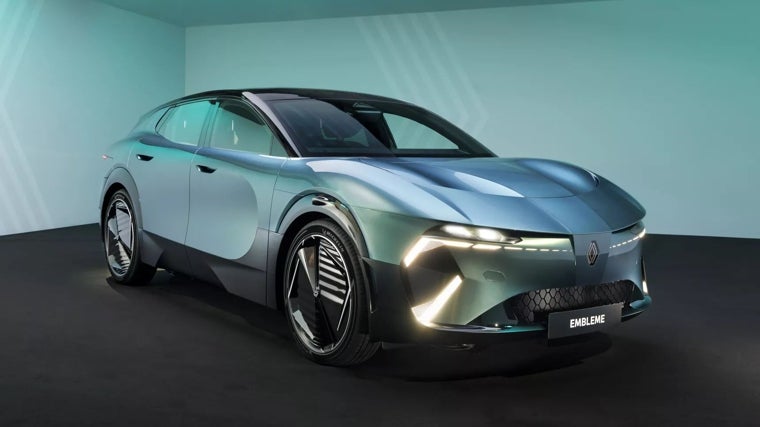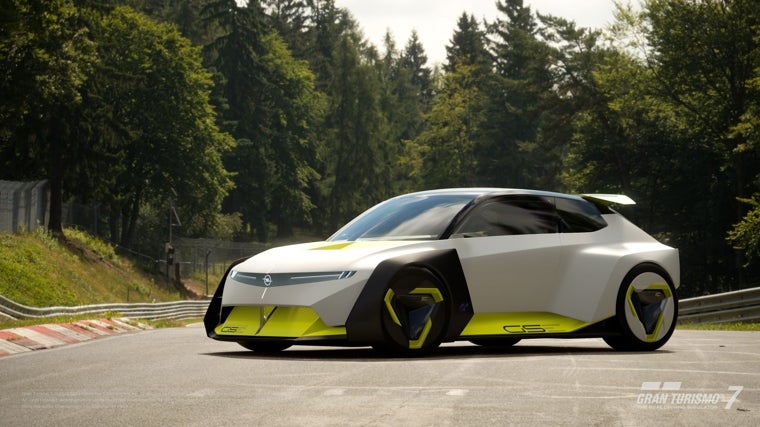The Munich Motor Show becomes the showcase for the new era of mobility.

The IAA Mobility, one of the most prestigious events in the automotive sector, opened its latest edition in Munich this Monday. The show seeks to consolidate its role as a comprehensive mobility platform, showcasing cutting-edge technologies, infrastructure solutions, and the latest trends in a sector undergoing rapid transformation.
With an expected attendance of 500,000 people and more than 55% of its exhibitors from outside Germany, the event is shaping up to be a crucial stage for the future of the industry.
This year's theme, "The New Era of Mobility," is reflected in the numerous world premieres presented. Sustainability and technological innovation are the central themes of an event that will feature figures such as four-time Formula 1 champion Sebastian Vettel. The show also offers visitors the opportunity to experience firsthand the latest advances in autonomous driving and electric vehicles.
"Here in Munich, we are presenting world premieres and impressive innovations that demonstrate our capabilities. I hope our industry will send a signal of strength and forward-thinking vision," said Jürgen Mindel, Director General of the German Automotive Industry Association (VDA).
The IAA Mobility, being held in Germany, is an unbeatable showcase for German companies, which have gone all out for their local and global audiences.
The brand took advantage of the event to announce a significant new naming strategy for its electric ID family. It will revive the names of its most iconic and popular models for its future electric vehicles.
The ID. Polo, whose production will begin in 2025 at the Martorell plant (Barcelona), will be the group's first compact electric vehicle, starting at €25,000, excluding purchase incentives. This model recaptures the spirit of one of the firm's most iconic cars with the aim of democratizing electric mobility. They also confirmed that there will be a sporty version, the ID. Polo GTI, arriving in 2026.
The brand's other major launch will be the ID. Cross, a compact SUV that will be presented as the electric version of the successful T-Cross. Its world premiere is scheduled for late 2026, with an estimated price of around €30,000. The model debuted at the Munich Motor Show and will be manufactured at the Landaben plant in Navarre, where the combustion-powered Polo was produced before its cancellation.
 Volkswagen ID. CROSS Concept
FP
Volkswagen ID. CROSS Concept
FP
The product offensive is complemented by the Skoda Epiq, assembled in Navarra, a Volkswagen Group brand focused on offering a range of urban and compact electric vehicles at more competitive prices, in response to growing pressure from Chinese manufacturers.
 Skoda Epiq
FP
Skoda Epiq
FP
The Spanish firm has surprised everyone with the unveiling of its Cupra Tindaya show car, which takes its name from a volcanic mountain in Fuerteventura and seeks to reflect the future of the brand's design language.
Camouflaged under a vinyl wrap, the Spanish brand has unveiled the also electric Cupra Raval, which will be manufactured at the Martorell plant in Spain. Based on Volkswagen's MEB+ platform and featuring front-wheel drive, the four-meter-long Raval is presented as a compact car with all the attributes that have made Cupra one of the fastest-growing brands. It will be available with two battery sizes, various power levels, and different trim levels.
 Cupra Raval
FP
Cupra Raval
FP
“The Cupra Raval shapes our future today. Because with it, we have managed to combine everything that Cupra represents: emotion, striking design, electrifying performance, and, as always, a focus on the driver,” said Markus Haupt, interim CEO of Seat/Cupra. “For us, the Raval is more than a car. What truly makes it special is the project behind it: the family of urban electric vehicles that we proudly lead from Spain. We are strengthening synergies within the Core Brand Group and turning the country into a hub for electric mobility, making cars accessible to millions of people,” he added.
2026 will be a decisive year for Seat as a company, marking the eighth anniversary of the Spanish sports brand, Cupra.
The French manufacturer took advantage of the event to unveil the sixth generation of its iconic Clio, which will arrive with a new concept as part of the brand's electrification offensive.
As Renault's flagship model, the Clio has been a mainstay of the range since 1990. The sales leader in Europe during the first half of 2025 (130,500 units sold), it is reinventing itself once again with a sixth generation.
 New Renault Clio
FP
New Renault Clio
FP
Along with the brand's iconic model, the public will also be able to discover the Renault 5 E-Tech Electric and Renault 4 E-Tech Electric.
These three new models will be accompanied by Renault's future through the Renault Emblem, a demonstration vehicle that acts as a low-carbon mobility laboratory.
The Emblème features a body with a design that focuses heavily on aerodynamics to maximize efficiency. Elements such as its long, sloping hood, side cameras that replace the rearview mirrors, and completely flat floor contribute to minimizing air resistance. Its styling is a combination of a family car (shooting brake) and a coupé, with sporty lines.
 Renault Embleme
FP
Renault Embleme
FP
One of the vehicle's most innovative features is its bi-mode propulsion system. It combines a rechargeable battery, designed for daily commutes, with a hydrogen fuel cell for long journeys. This configuration allows it to achieve a total range of up to 1,000 kilometers without stopping to recharge the battery, but rather refueling with hydrogen in less than five minutes to continue the journey. Furthermore, the Emblème has been designed with circularity in mind, with 50% recycled materials and being more than 90% recyclable at the end of its useful life.
The brand with the four rings has also played at home with the presentation of the Audi Concept C, a fully electric two-seater sports car that stands out for its radically simple design and distinctive light signature.
 Audi Concept C
FP
Audi Concept C
FP
This concept, expected to hit the market in 2027, offers the advantages of a convertible without sacrificing the essence of a closed body. Also playing a prominent role will be the latest addition to the range, the Q3 Sportback, which supports fast charging of up to 50 kW in ideal conditions.
The Bavarian firm has focused its presence on the "Neue Klasse" (New Class), the next generation of electric models. The main event is the public presentation of the BMW iX3, the first model in this new era that promises major technological advances.
The new model stands out not only for its design and electronic brain, but also for its performance. The iX3 debuts the sixth generation (Gen6) of BMW eDrive technology, which allows it to reach a maximum charging speed of 400 kW. This translates into the possibility of adding 372 kilometers of range in just ten minutes, making long journeys much more convenient. The vehicle also includes bi-directional charging capabilities, allowing it to function as a "power bank on wheels."
 BMW iX3
FP
BMW iX3
FP
In addition, its stand will showcase other electrified models such as the BMW i4, i5, i7, and iX, as well as the BMW X3 30e xDrive and the BMW M5 Touring with a plug-in hybrid drive system. MINI, for its part, will be presenting two JCW exhibition models for the world premiere.
The German manufacturer has focused on "high speed, battery power, and excitement" with the unveiling of the Opel Corsa GSE Vision Gran Turismo and the Opel Mokka GSE models.
Outstanding efficiency combined with thrilling driving dynamics are key to the Opel Corsa GSE Vision Gran Turismo. It comes with two 350 kW (476 hp) electric motors, one on each axle, and has a combined output of 588 kW (800 hp). In addition, permanent all-wheel drive improves grip, handling, and overall vehicle stability. In combination with the single-speed transmission, the Corsa GSE Vision Gran Turismo accelerates from 0 to 100 km/h (62 mph) in just 2.0 seconds and can reach a top speed of 320 km/h (198 mph). Furthermore, the inclusion of a boost function that provides an additional 59 kW (80 hp) for up to four seconds makes overtaking on the track even easier. Once fully depleted, the boost function fully recharges in 80 seconds.
Despite coming with an 82 kWh battery, the Corsa GSE Vision Gran Turismo weighs just 1,170 kg. This has been achieved thanks to the use of lightweight materials throughout.
 Opel Corsa GSE Vision Gran Turismo 7
Opel Corsa GSE Vision Gran Turismo 7
With racing simulators, the Blitz brand promises an immersive experience for attendees, who will be able to experience the thrills of its new all-electric models from the GSE sub-brand.
On this occasion, European firms shared the exhibit space with a host of Asian brands. The arrival of Chinese car brands in Europe is one of the most significant phenomena in the automotive industry today, and their strong presence at the Munich Motor Show is the best example of their ambition.
Unlike traditional brands, which still combine technologies, Chinese manufacturers are focusing on the development of electric and fuel cell vehicles. Their main focus for the European market is not only the launch of new models, but also the introduction of cutting-edge technologies and the conquest of key segments.
Asian brands are making a strong entrance into the European market, and BYD has positioned itself as one of the main players at the show.
The automotive group Stellantis has a significant presence with its Chinese joint venture, Leapmotor, which will debut the B05 and B10 models.
 Leapmotor B10
Leapmotor B10
The latter stands out for its electric range of around 600 kilometers on the combined cycle. The B10, the first model in the upcoming B series, is built on the advanced LEAP 3.5 architecture.
It features an updated and customizable digital cockpit system powered by the Qualcomm® 8155 platform, paired with Leapmotor OS 4.0 Plus. This combination delivers an immersive and intuitive in-car experience, enabling seamless connectivity via Apple CarPlay and Android Auto.
The B10 is also equipped with class-leading Cell-to-Chassis (CTC) 2.0 technology with custom-designed, low-profile battery cells. This advancement unlocks additional cabin space, improves structural integration, and enhances fast-charging efficiency.
To deliver superior handling and comfort, the B10's chassis has been developed jointly with Stellantis. It features a newly optimized steering angle algorithm and an integrated braking system, ensuring a safer, smoother, and more energy-efficient driving experience.
The Chinese firm has launched its new BYD SEAL 6 DM-i, a plug-in hybrid model that stands out for its combined range of up to 1,505 kilometers, as it is an electric vehicle with extended range (plug-in hybrid). With the European presentation of the SEAL 6 DM-i Touring, the brand's current range in the European market reaches 13 models. BYD's European sales network will exceed 1,000 dealerships by the end of 2025 and will more than double that number by the end of 2026.
 BYD SEAL 6 DM-i
FP
BYD SEAL 6 DM-i
FP
At the company's official press conference held at the IAA Mobility 2025 in Munich, BYD Executive Vice President Stella Li confirmed exciting new features for the DOLPHIN SURF, the recently launched 100% electric A-segment vehicle. BYD's most affordable model in Europe has earned the highest five-star safety rating in Euro NCAP tests.
Stella Li also revealed that the DOLPHIN SURF will be the first model to be manufactured at BYD's upcoming production plant in Hungary. The Szeged factory continues its path to begin manufacturing cars by the end of 2025, and the DOLPHIN SURF will be the first to feature in BYD's Made in Europe, for Europe strategy.
In addition to its sedan version, BYD has announced its entry into the European family car market with the Touring version of the same model.
Chinese company XPENG unveiled its latest advancements at the IAA Mobility 2025 in Munich to lead the future of AI-powered mobility. The European debut of the new P7 showcases the company's strengths in technology, artificial intelligence, intelligent driving systems, and high-performance engineering, while also reinforcing its global expansion strategy.
 XPENG P7
FP
XPENG P7
FP
“With the new P7, we are demonstrating to consumers around the world how AI can transform a car into a warm and intelligent companion,” said Mr. He Xiaopeng, Chairman and CEO of the company.
"It demonstrates our capabilities in self-developed AI. XPENG doesn't just make cars; it creates smart and sustainable mobility experiences for global users. The new Munich R&D Center demonstrates our strong commitment to creating these experiences together with Europe, deepening partnerships, driving local innovation, and serving European users with cutting-edge mobility solutions."
In addition, XPENG will officially open its Munich R&D Center in September, its first in Europe, to continue innovating and engaging closely with European users.
ABC.es





-U82778080644mSK-1024x512%40diario_abc.jpg&w=3840&q=100)